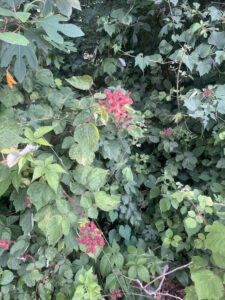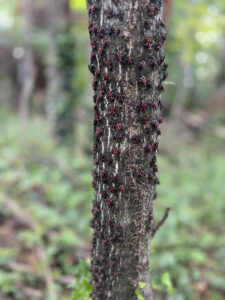According to the U.S. Department of the Interior, invasive species are “non-native species whose introduction does or is likely to cause ecological or economic harm, or is a threat to human health.” Invasive species can outcompete native species for natural resources (including water, light, nutrients, and space), disrupt the food chain, draw pollinators away from native plants, have the potential to push rare species closer to extinction, and cause an overall reduction in biodiversity. Biodiversity is necessary for functioning and resilient ecosystems in the face of climate disruption. Invasive species impose substantial costs on society. For example, they can drive native species onto the Endangered Species list, resulting in associated regulatory costs, exacerbate the threat of wildland fire that destroys property and threatens lives, increase the cost of delivering water and power; damage infrastructure, degrade recreation opportunities and discourage tourism.
On UMBC’s campus, there are a significant amount of invasive plant species displacing the native vegetation. These invasive plants continue to add to the stressors facing our natural environment by damaging and altering the native tree population. Not only are invasive species an environmental hazard, but they are a safety hazard. When invasive plants kill trees, these trees can fall onto people, roadways, and property. Through the use and implementation of this management plan, invasive species can be prevented from introduction and spread, removed, managed, and controlled so the associated damages may be significantly reduced.
UMBC’s Invasive Species Management Plan
Click below to read the management plan for invasive species on UMBC’s Campus.

